
1965: Porsche 911 2.0 Targa is unveiled to the public
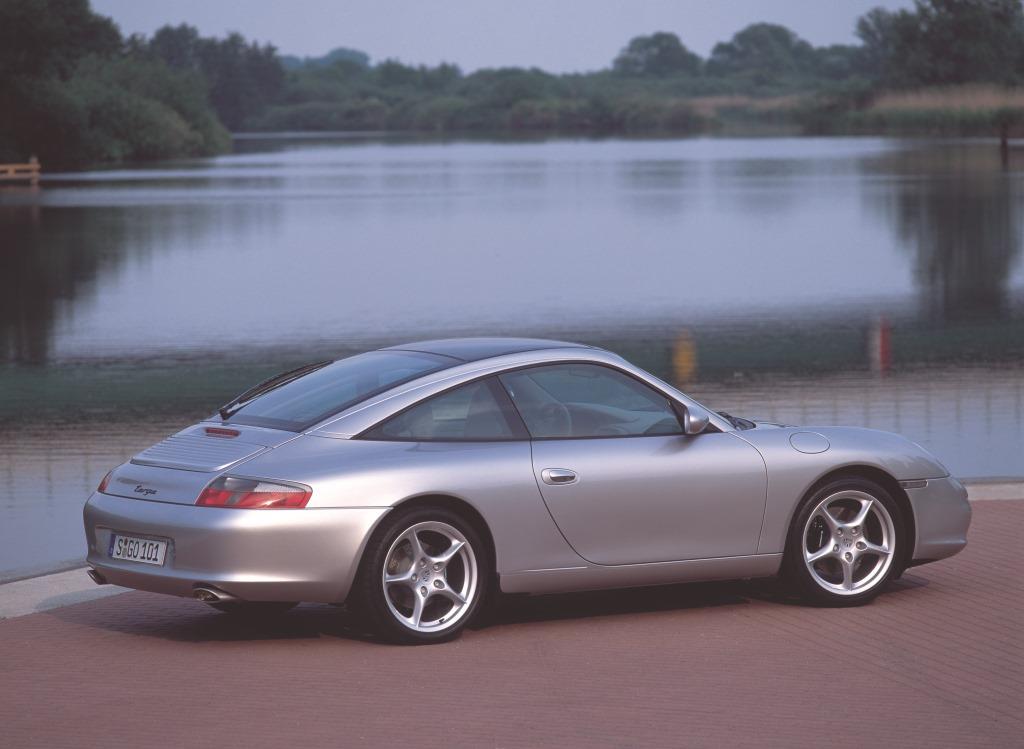
More than 1.5 square meters of solid glass gives the new 911 Targa based on the 911 Carrera coupé a fully transparent roof opening up new perspectives to a new world. Never before has a Porsche 911 had this much glass. Simply pressing a button, the driver can move back the glass roof by up to half a meter, obtaining a maximum roof opening of 0.45 square meters. Like the windscreen, the glass roof is made of pre-tensioned, splinter-free laminated security glass. Another automatic feature is the cloth sunblind extending out beneath the glass roof to protect the driver and his passengers from excessive sunglare as well as cold temperatures.
The new Targa is the first 911 to feature a rear window folding open for extra convenience. After opening the closing mechanisms, all you have to do is briefly lift the heated rear window, two gas pressure springs taking over the rest. This gives you very easy and convenient access to the rear luggage compartment with up to 230 litres storage volume, conveniently taking up your cases, bags or other luggage. Two interior lights at the rear are automatically switched on when opening the rear window, providing adequate illumination in the dark for loading and unloading. And when closing the window, finally, you have the assistance of an electric closing aid.
Despite the its somewhat higher weight versus the Carrera coupé, the Targa is an excellent sprinter. Acceleration form 0-100 km/h comes in 5.2 seconds and the speedometer reaches the 200 km/h-mark after just 18.3 seconds. Maximum of the 3.6-litre flat-six power unit is 235 kW or 320 bhp at 6800 rpm, giving the car a top speed of 285 km/h or 177 mph.
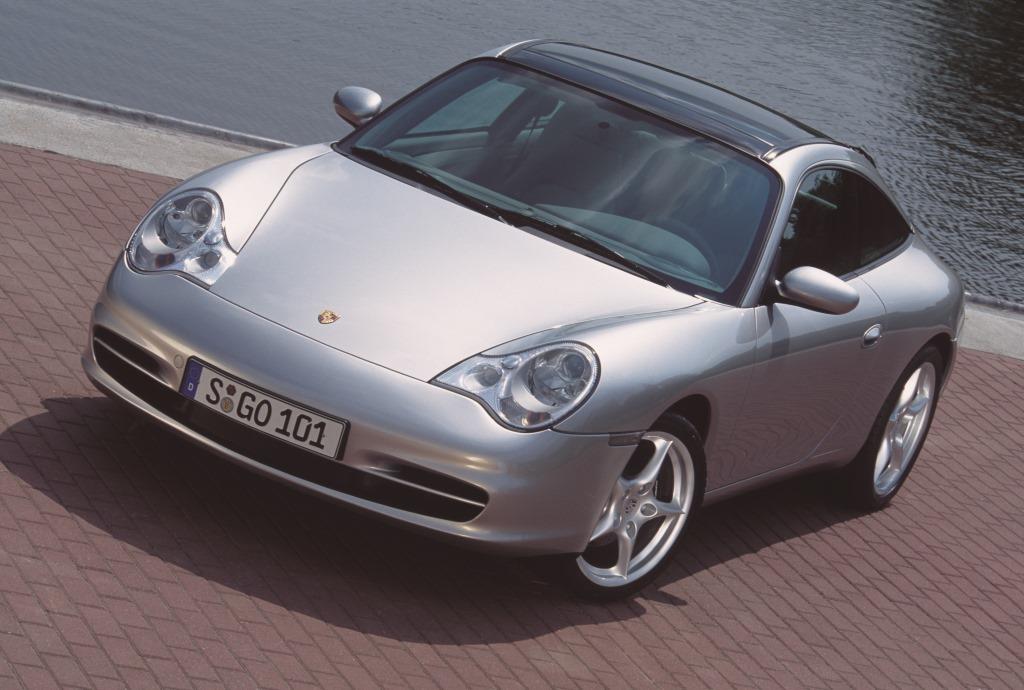
The new Targa easily outperforms the Carrera coupé, that is the model which provided the basis for developing the Targa, when it comes to “topless” motoring: When the Targa glass rood is moved back almost without the slightest sound by two electric motors, the driver and his passengers will enjoy an open space almost twice the size of a conventional sliding roof. Simply pressing a button, you move back the glass roof by up to half a meter, obtaining a maximum opening of 0.45 square meters. A specially developed wind deflector prevents unpleasant air turbulence in the interior, allowing you to enjoy open air motoring even in cold weather.
A highly effective sunblind can also be moved automatically beneath the sunroof. Made of a partly permeable black cloth, this very convenient sunblind keeps out excessive sunglare but helps to keep the car warm inside in cold winter weather.
The folding rear window is one of the highlights of the new 911 Targa together with the glass roof. Featuring two gas-pressure spring hidden inconspicuously behind the black-painted window trim, the rear window opens up conveniently whenever required. This provides perfect access to the rear luggage compartment with a volume of up to 230 litres, taking up cases, bags or other luggage. The rear window is unlocked either by a button on the side-sill next to the driver’s seat or by remote control, the process of closing the window being facilitated by an electric closing aid.
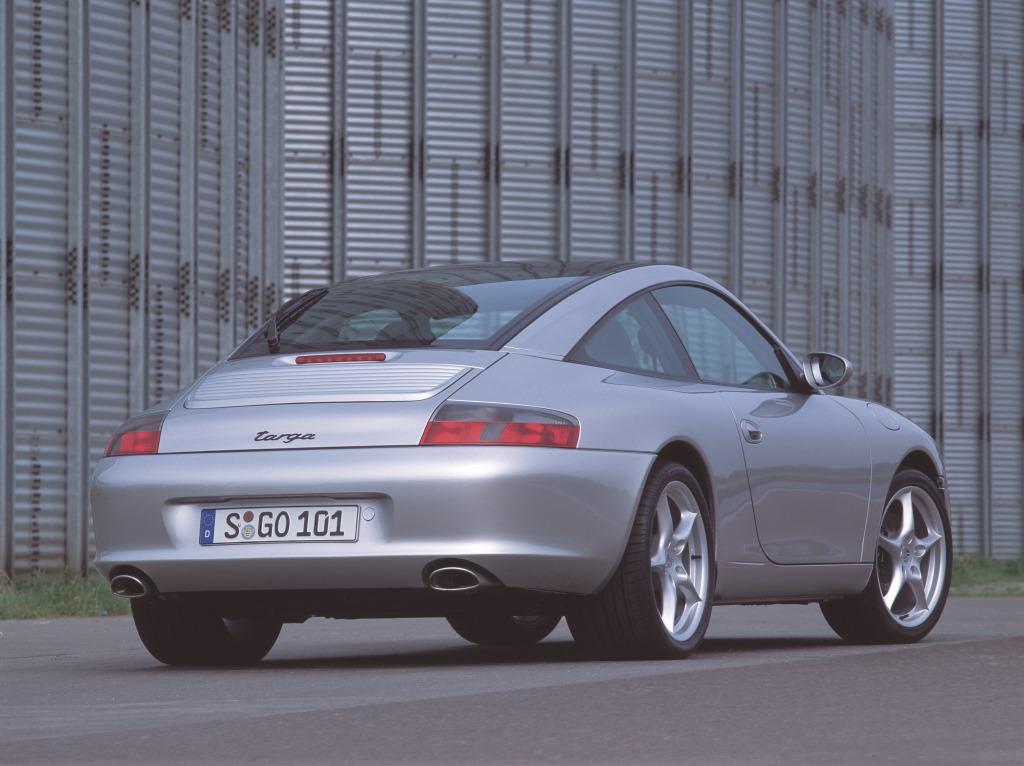
Like in the 911 Carrera cabriolet, a 30-millimetre-thick tube made of high-strength steel reinforces the A-pillars also extending back in the Targa from the roof frame to the C-pillars. The steel tube in the A- and C-pillars is welded to the body by means of junction plates. The third important support point for the roof is formed by the B-pillars leading up from the side section of the body to the roof frame, where the pillars are firmly welded. The high standard of body stiffness obtained in this way naturally also means greater active safety. In conjunction with the special chassis and suspension tuning incorporating in particular the anti-roll bars, the Targa offers the same sporting agility and driving pleasure on winding roads as the Carrera coupé.
Like the windscreen, the glass roof is made of pre-tensioned laminated security glass passing all the standard crash tests and therefore overfulfilling all safety requirements the world over.
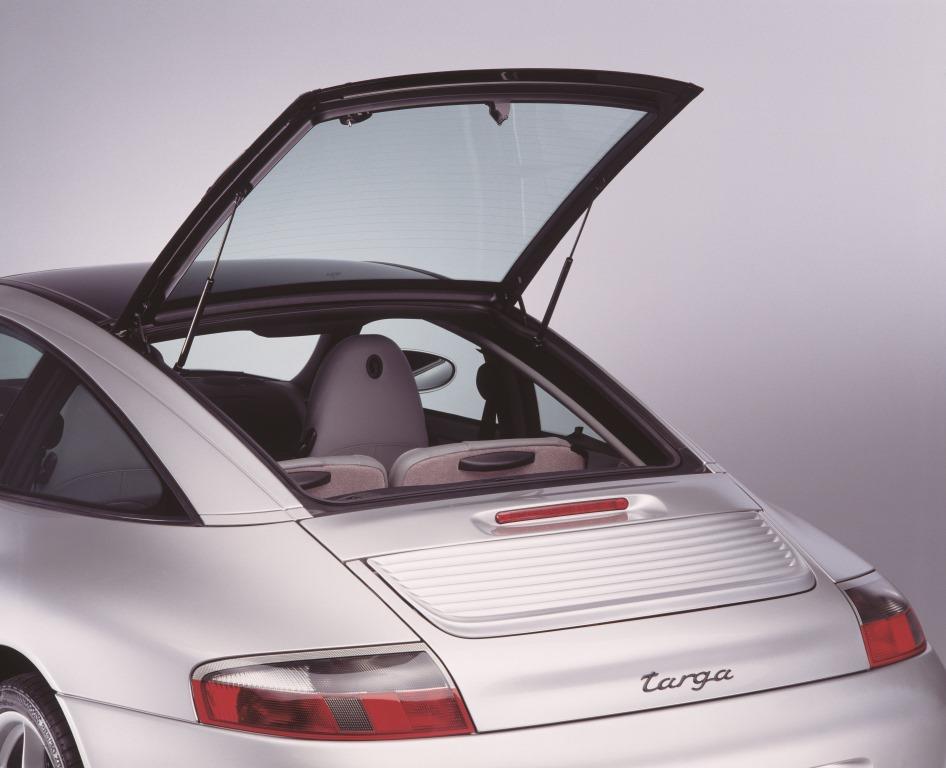
Within the engine bay of the 911 Targa you will find Porsche’s new 3.6-litre flat-six power unit developing maximum output of 235 kW or 320 bhp at 6800 rpm and accelerating the car to a top speed of 285 km/h. Acceleration to 100 km/h, in turn, comes in 5.2 seconds. Maximum torque is 370 Newton meters or 273 lb-ft at just 4250 rpm.
Despite this supreme engine power and the “beefy” torque curve throughout the entire speed range, fuel consumption under the EC standard is a mere 11.1 litres/100 km or 25.4 mpg Imp. This superior fuel economy is attributable in particular to VarioCam Plus introduced by Porsche for the first time in spring 2000 in the 911 Turbo. Supplementing the VarioCam intake camshaft adjustment by adjustment of the valve lift on the intake side, this system incorporates switching cup tappets operated by an electrohydraulic 3/2 way switch valve. With different cam contours on the intake camshaft, the cup tappets switching to the various cams modify the valve lift curves of the engine accordingly.
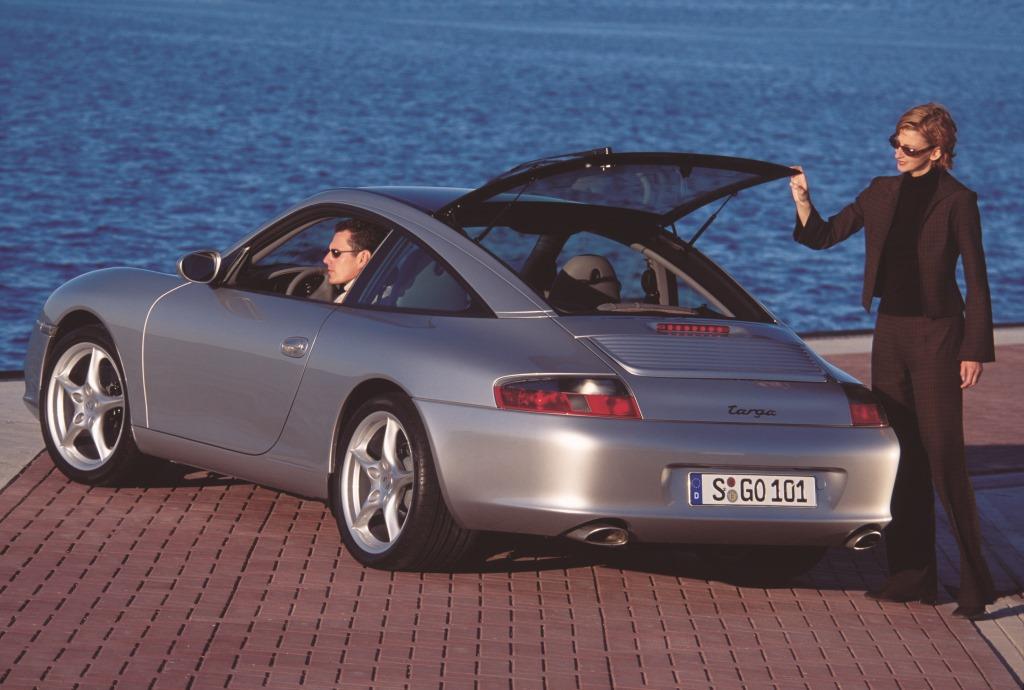
Inside, the 911 Targa differs significantly from the Carrera coupé particularly at the rear. With the folding rear window extending up further than on the coupé, the trim on the rear crossbar has been moved further to the back, increasing the capacity of the rear luggage compartment with the rear-seat backrests folded down by 30 litres to a total of 230 litres on the new model.
The belt rollers at the rear are also new in the Targa, fitted directly beneath the somewhat wider roof pillars next to the rear side windows extending up to a pointed end and therefore not requiring pivot points like on the Carrera models. The left- and right-hand belt roller housings furthermore offer sufficient space for one interior light each, which switch on when you open the rear window and provide good illumination of the rear passenger compartment in the dark.
The other features and items inside the car are the same as in the 911 Carrera coupé, seats finished partly in leather, a three-spoke steering wheel, automatic air conditioning, heatinsulating glass, and on-board computer, a cassette radio, electric window lifts, electrically adjustable and heated rear-view mirrors, central locking as well as an immobiliser and an alarm system with interior surveillance all coming, together with other items, as standard.
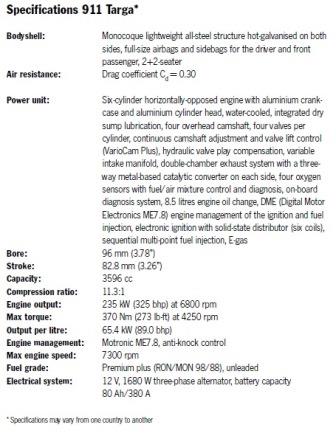
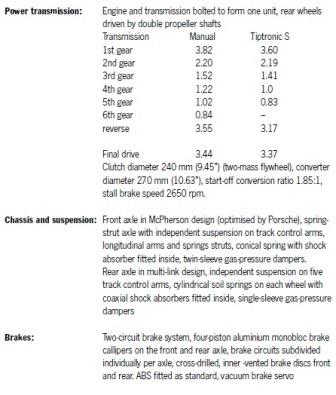
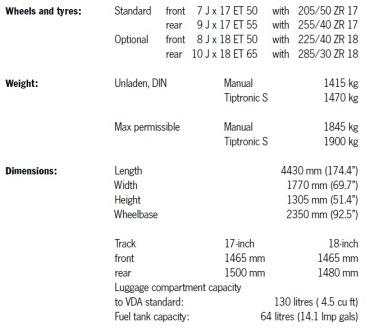
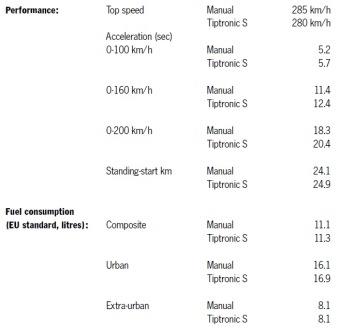

1965: Porsche 911 2.0 Targa is unveiled to the public
.jpg)
1998 911 (992) Targa

Porsche Press kit

Porsche Literature

Our Porsche Cars